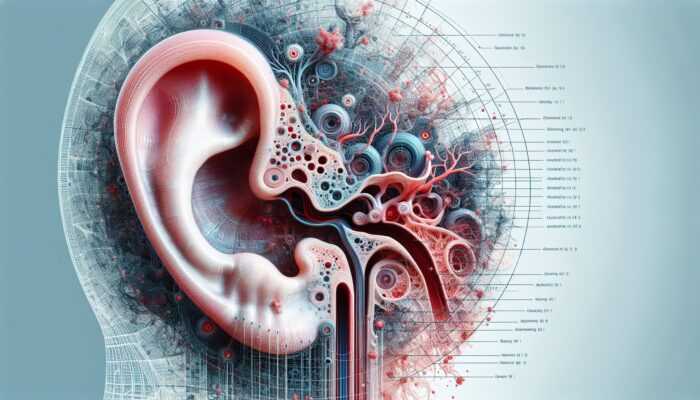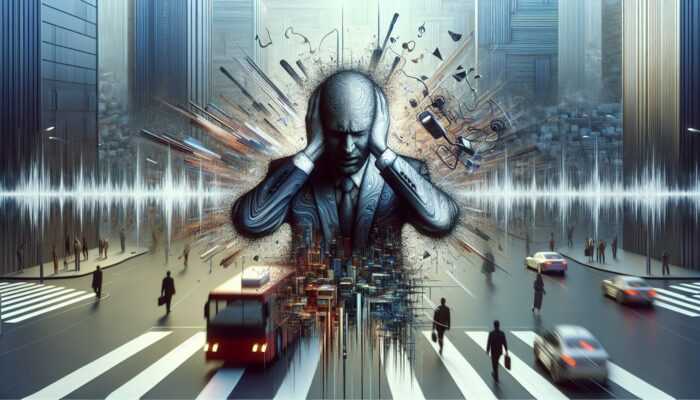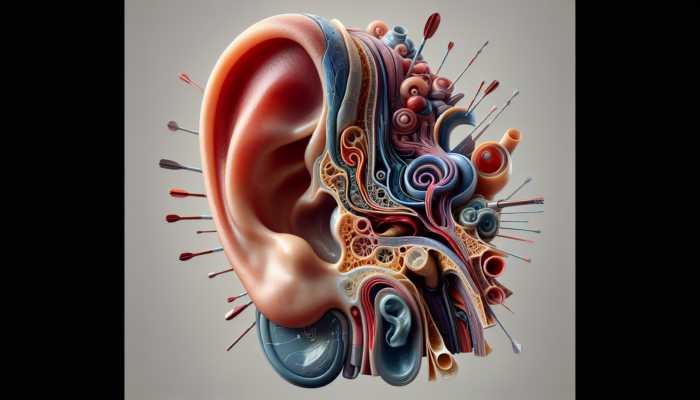Last Updated on 17/12/2025 by Admin
Exploring the Different Aspects of Hearing Loss in Gaming
Identifying the Various Types of Hearing Loss
Hearing loss is a complex condition that can profoundly affect a gamer’s overall experience. It manifests in three primary forms, each with distinct characteristics: Conductive hearing loss, sensorineural hearing loss, and mixed hearing loss. Conductive hearing loss occurs due to issues in the outer or middle ear, which impede effective sound transmission. This type may stem from factors such as ear infections, fluid accumulation, or physical obstructions. On the other hand, sensorineural hearing loss involves damage to the inner ear or auditory nerve, frequently linked to aging or prolonged exposure to loud noises, making it particularly relevant for gamers engaged in extended gameplay sessions. Mixed hearing loss combines aspects of both conductive and sensorineural hearing loss, further complicating the auditory challenges faced by players.
Each type of hearing loss can uniquely impact gamers, affecting their capacity to perceive essential sound cues vital for successful gameplay. For example, a player experiencing sensorineural hearing loss might find it difficult to detect subtle audio signals, such as the sound of footsteps in stealth-based games or crucial timing cues in fast-paced scenarios, which can greatly impair their ability to play effectively. Gaining insights into these distinctions is crucial for developing strategies that enable gamers with hearing loss to adapt and excel in their gaming environments.
Assessing the Influence of Hearing Loss on Gameplay Experience
The repercussions of hearing loss on the gaming experience are substantial, affecting not just the perception of sound but also the way games are played and enjoyed. Many players depend on audio cues for navigation and strategy formulation, so any impairment can lead to significant frustration and diminished immersion. The specific elements of gameplay most impacted by hearing loss include:
- Sound cues that indicate location and movement
- Voice chat interactions during multiplayer gaming sessions
- Environmental sounds that add context to the gameplay
- Game dialogue that propels the narrative forward
- Audio alerts that signal in-game events or potential threats
- Music that enhances the overall atmosphere of the game
- Feedback sounds that signify success or failure
- Dynamic soundscapes that create a more immersive experience
The inability to perceive these auditory elements can lead to a decrease in enjoyment and engagement, prompting the need for adaptations to preserve a fulfilling gaming experience. Gamers may find themselves playing in silence or depending on visual cues, which can limit the thrill and strategic depth typically offered by rich audio experiences.
Recognizing Common Symptoms of Hearing Loss Among Gamers
Individuals with hearing loss in the gaming community often experience a variety of symptoms that can significantly impact their gameplay. A primary concern is the difficulty in hearing game audio; sounds that once enriched the gaming environment might become muffled or unclear. Additionally, understanding in-game dialogue can be particularly challenging, especially in narrative-driven games filled with character interactions. Critical sounds, such as the faint rustling of an approaching enemy or the distinctive audio of an in-game notification, may be hard to distinguish, resulting in missed opportunities and unexpected failures during gameplay.
These symptoms can create a sense of disconnect between the player and the game world. Players may feel isolated or frustrated, as they cannot fully immerse themselves in the gaming narrative or actively participate in multiplayer scenarios. Acknowledging these common symptoms is the first step toward addressing them, empowering gamers to seek suitable solutions and adaptations that enhance their experience.
Implementing Effective Strategies to Manage Hearing Loss in Gaming
Addressing hearing loss while enjoying gaming necessitates a proactive approach that involves various strategies to enhance the gaming experience. One highly effective method is the incorporation of assistive technologies, such as specialized gaming headsets designed specifically for individuals with hearing impairments. These devices often boast features like sound amplification and customizable audio settings that cater to the user’s specific hearing needs.
Customizing audio settings within games can also yield significant benefits. Many contemporary games offer options to adjust volume levels for specific sound effects or dialogue, enabling gamers to focus on the elements that are most crucial to their play style. Regular breaks during gameplay are another essential strategy that, while not directly related to audio, is vital for overall well-being. Extended gaming sessions can lead to auditory fatigue, making it crucial for players to rest their ears periodically.
By adopting these strategies, gamers can effectively navigate their hearing loss while still enjoying the full range of their gaming experiences. Hearing loss need not be a barrier; rather, it can serve as a catalyst for adaptation and innovation in how individuals engage with games.
Gaining Expert Insights into the Impact of Hearing Loss on Gamers
Examining Real-World Experiences of Gamers with Hearing Loss
Real-world experiences of gamers with hearing loss exemplify the resilience and adaptability of individuals facing this challenge. Many gamers have devised unique strategies to modify their gameplay experiences, such as:
- Utilizing subtitles or closed captions in games for improved comprehension
- Relying on visual cues, like character animations or flashing lights, to detect in-game events
- Engaging with communities focused on accessible gaming
- Using specialized gaming headsets that enhance audio clarity
- Communicating through text chat during multiplayer sessions
- Adjusting in-game settings to boost essential sound effects
- Practicing strategic gameplay that minimizes reliance on auditory cues
- Collaborating with game developers to advocate for enhanced accessibility features
These adaptations not only contribute to improved gaming experiences but also foster a sense of community support. They underscore the significance of inclusivity in gaming, demonstrating that with the right strategies, gamers with hearing loss can thrive and enjoy their passion for gaming.
What Psychological Effects Can Hearing Loss Have on Gamers?
The psychological effects of hearing loss can be quite profound, impacting gamers’ mental well-being. Frustration often arises as gamers grapple with engaging in games that demand acute auditory perception. This frustration can develop into feelings of isolation, particularly when communication with teammates or friends during multiplayer sessions becomes a challenge. The joy of gaming—a source of relaxation and entertainment—can wane, resulting in a notable decrease in overall satisfaction with the gaming experience.
To manage these psychological effects, gamers might employ various coping strategies. For example, cultivating a supportive gaming community can provide encouragement and camaraderie, helping alleviate feelings of isolation. Setting realistic expectations for gameplay can also help mitigate frustration, allowing gamers to enjoy their time without unnecessary pressure. Lastly, participating in forums or groups dedicated to gamers with hearing loss can offer a sense of belonging and shared experiences, further fostering community support.
Recognizing and addressing the psychological impacts of hearing loss is vital for building resilience and enabling gamers to continue enjoying their hobby in a meaningful way.
Providing Expert Analysis on Accessibility Features in Gaming
The inclusion of accessibility features in video games is critical for enhancing the experience of gamers with hearing loss. Experts highlight the necessity of implementing comprehensive features that cater to diverse auditory needs, allowing players to interact with games on a level comparable to their hearing peers. Features such as subtitles, customizable audio settings, and visual indicators can significantly enrich the gaming experience for players with hearing impairments.
Subtitles not only clarify dialogue but can also encompass contextual sound descriptions that enhance comprehension. Customizable audio settings empower players to amplify specific sounds, ensuring they can detect critical in-game cues effectively. Visual indicators, including on-screen prompts or color-coded alerts, can convey essential information that would typically rely on sound, fostering a more inclusive gaming environment.
Experts advocate for ongoing collaboration between gamers, developers, and accessibility organizations to continuously refine and expand these features. By prioritizing accessibility from the early stages of game development, creators can ensure that their products cater to all players, promoting a more inclusive gaming landscape for everyone.
Exploring Technological Solutions for Gamers with Hearing Impairments
What Are the Latest Assistive Technologies for Gamers?
The realm of assistive technologies available for gamers with hearing loss is continuously advancing, providing innovative solutions that enhance the gaming experience. Among the most recent technologies are specialized gaming headsets equipped with advanced sound processing capabilities. These headsets often offer features designed to enhance clarity and balance sound frequencies, allowing gamers to better discern crucial audio cues that may otherwise be missed.
Sound amplifiers, which are designed to complement standard gaming setups, can also significantly improve hearing capabilities. These devices can be adjusted to filter out background noise while emphasizing important sounds, creating an immersive gaming environment tailored to individual needs. Additionally, software solutions that integrate with gaming platforms can offer real-time audio translations into visual or text formats, enabling gamers to remain engaged without missing critical information.
Investing in these technologies not only enhances the immediate gameplay experience but also improves overall communication and social interaction within gaming communities, allowing for a more interconnected and enriched experience.
Integrating Hearing Aids with Gaming Devices for Enhanced Accessibility
The integration of hearing aids with gaming devices marks a significant advancement in accessibility for gamers with hearing loss. Many contemporary hearing aids are equipped with Bluetooth technology, enabling seamless connectivity with gaming consoles and PCs. This integration allows gamers to stream audio directly from their devices, ensuring clear audio for sound effects, dialogue, and other critical audio elements, thereby enhancing overall gameplay.
Moreover, hearing aids can be customized to adapt to various gaming environments. Gamers can adjust their hearing aids to amplify specific frequencies associated with game audio, reducing the strain of deciphering sounds in busy gaming contexts. This technological progress not only facilitates improved hearing but also fosters a more dynamic and immersive gaming experience for players.
As manufacturers continue to innovate and enhance the compatibility of hearing aids with gaming devices, the potential for creating a fully integrated gaming environment for individuals with hearing loss expands dramatically, making gaming more enjoyable and accessible than ever before.
Customizable Audio Settings in Video Games
The availability of customizable audio settings in video games has become increasingly vital for crafting inclusive gaming experiences for players with hearing loss. Many modern games now feature options that allow gamers to tailor their audio settings to match their unique hearing capabilities. These features enable players to adjust the balance between dialogue, sound effects, and background music, allowing them to focus on the most critical audio components for their gameplay.
For instance, some games allow players to increase the volume of footsteps or gunfire while simultaneously lowering background music, ensuring that essential cues are heard without distraction. Additionally, visual sound indicators can be integrated into gameplay, providing on-screen alerts for in-game events that would typically rely on auditory cues, further enhancing accessibility for all players.
These customizable settings not only improve the gameplay experience for individuals with hearing loss but also promote a more engaging and immersive environment overall. By prioritizing accessibility in audio design, game developers can ensure that all players, regardless of their hearing abilities, can fully enjoy their gaming adventures.
How Does Hearing Loss Impact Communication in Multiplayer Games?
Addressing Challenges in Team Coordination
Hearing loss can significantly hinder communication and coordination in multiplayer games, where teamwork and collaboration are often essential for success. Many games rely heavily on voice chat for strategic discussions, allowing teammates to share game plans, callouts, and responses to in-game events. Gamers with hearing loss may struggle to follow these conversations, resulting in communication breakdowns that can ultimately diminish team performance.
Furthermore, the rapid pace of multiplayer gaming can intensify these challenges. With multiple players speaking at once, discerning critical information becomes increasingly difficult. Consequently, gamers with hearing loss may feel excluded from essential discussions or miss vital cues that could impact the game’s outcome.
To alleviate these challenges, teams can adopt alternative communication methods, such as using text chat or visual cues. Establishing clear communication protocols can help ensure that all players, regardless of hearing abilities, can contribute effectively to team strategies and enhance overall performance.
Utilizing Text and Visual Cues for Enhanced Communication
Gamers with hearing loss frequently depend on text and visual cues to communicate effectively in multiplayer settings. Text chat features allow players to convey messages rapidly and succinctly, ensuring that critical information is exchanged without relying on audio. Many games now include integrated text chat systems that facilitate seamless communication, helping bridge the gap created by hearing loss.
Visual cues, such as on-screen indicators for in-game events, also play a crucial role in enhancing communication. These cues enable players to respond to critical situations without needing to hear audio alerts. For instance, visual symbols may signal when an opponent is approaching or when an objective requires attention, allowing players to react promptly and strategically.
By embracing these communication tools, gaming communities can cultivate inclusive environments that support all players. Encouraging the use of text and visual cues not only assists gamers with hearing loss but can also enhance overall team communication and coordination, leading to improved gameplay experiences for everyone.
What Are the Best Practices for Creating Inclusive Gaming Communities?
Establishing inclusive gaming communities is vital for supporting gamers with hearing loss. Implementing various strategies can create an environment where all players feel welcomed and valued. One effective practice is fostering open communication regarding accessibility needs. Encouraging players to express their preferences and challenges can help facilitate tailored gaming experiences that cater to everyone.
Additionally, promoting the use of assistive technologies, such as specialized headsets or customizable audio settings, can enhance inclusivity within the community. Communities should advocate for developers to incorporate accessibility features directly into games, ensuring all players can benefit from these innovations.
Hosting events and tournaments with accessibility considerations can also promote inclusivity. For example, providing sign language interpreters or ensuring that all gameplay instructions are available in written form can accommodate a diverse player base. By prioritizing inclusivity, gaming communities can foster supportive environments where gamers with hearing loss can thrive and enjoy their passion for gaming.
Research-Backed Insights on the Impact of Hearing Loss on Gamers
Providing Actionable Steps for Gamers to Manage Hearing Loss
Gamers can actively take steps to manage their hearing loss effectively, ensuring they can continue enjoying gaming while safeguarding their auditory health. Regular hearing evaluations are essential, as they enable gamers to monitor their hearing status and make informed decisions regarding their audiological needs. Identifying changes in hearing ability early can lead to timely interventions and the adoption of assistive technologies that enhance gameplay.
Embracing the right assistive technologies is another crucial step. Investing in specialized gaming headsets or sound amplifiers designed for individuals with hearing impairments can significantly enhance audio clarity and overall experience. Furthermore, customizing in-game audio settings can help amplify vital sound effects while diminishing background noise, creating a more enjoyable gaming atmosphere.
Educating oneself about hearing health is equally important. Numerous resources are available that provide insights into hearing loss, its effects, and management strategies. By taking charge of their auditory health, gamers can ensure they continue to engage fully with their favorite pastimes, enriching their gaming experiences.
How Can Gaming Enhance Auditory Skills for Individuals with Hearing Loss?
Research indicates that gaming can play a significant role in improving auditory skills, particularly for individuals experiencing hearing loss. Engaging with video games often requires players to process auditory information swiftly and accurately. This cognitive engagement can strengthen auditory pathways, potentially aiding in sound interpretation even amidst background noise.
Moreover, games designed to enhance auditory skills can offer targeted exercises that allow players to practice distinguishing between various sounds or identifying sound locations. This gameplay can lead to improvements in sound localization, comprehension, and overall listening abilities. Consequently, gaming serves a dual purpose, providing entertainment while fostering the development of auditory skills in players.
For those dealing with hearing loss, incorporating gaming into their routine may present a valuable opportunity to maintain and enhance auditory function, ultimately improving their quality of life.
Long-Term Implications of Gaming on Hearing Health
Long-term gaming can have implications for hearing health, particularly if players are frequently exposed to loud sounds or engage in prolonged gameplay sessions. Certain game genres, especially those characterized by intense soundscapes or high volumes, can contribute to auditory fatigue and potential hearing deterioration over time. However, with proactive measures, gamers can mitigate these risks while continuing to enjoy their favorite activities.
Implementing volume control and taking regular breaks are crucial strategies for preserving hearing health. Setting volume limits can help prevent excessive exposure to harmful sound levels. Additionally, utilizing assistive technologies that soften harsh sounds or highlight dialogue can create a more balanced auditory experience.
Being mindful of hearing health during gaming allows individuals to enjoy their passions without compromising their auditory well-being. By prioritizing responsible gaming practices, players can engage in their favorite activities while safeguarding their hearing health for the long term.
Strategies for Gamers to Effectively Adapt to Hearing Loss
Selecting the Ideal Gaming Headset for Enhanced Experience
Choosing the right gaming headset is essential for gamers with hearing loss, as it can substantially enhance their overall gaming experience. Headsets designed specifically for individuals with hearing impairments frequently feature advanced audio technology that amplifies sound clarity and balances frequencies, making it easier to discern important audio cues. When selecting a headset, it’s vital to consider features such as adjustable sound settings, noise cancellation capabilities, and compatibility with various gaming devices.
Some headsets also come equipped with built-in sound processing functions, enabling users to customize audio output according to their hearing preferences. For instance, gamers may benefit from headsets that emphasize dialogue or critical in-game sounds while reducing distracting background noise. This tailored approach ensures that players can immerse themselves in the gaming experience without being overwhelmed by competing sounds.
Investing in a high-quality headset specifically designed for individuals with hearing impairments can markedly enhance gameplay enjoyment and performance, allowing gamers to connect more deeply with their favorite titles.
Adjusting Game Settings for Improved Audio Clarity
Modifying game settings to enhance audio clarity is a straightforward yet effective strategy for gamers dealing with hearing loss. Many modern games provide rich audio customization options, empowering players to fine-tune sound levels for dialogue, sound effects, and background music. By increasing the volume of critical sounds, such as footsteps or environmental cues, gamers can enhance their situational awareness and responsiveness during gameplay.
In addition to volume adjustments, many games offer audio presets specifically designed for players with hearing impairments. These presets often include settings that optimize sound frequencies for better clarity and distinction, significantly improving the gaming experience.
Furthermore, integrating visual alerts alongside audio cues can help players stay informed about key game events without solely depending on sound. This dual-layer approach to audio management creates a more inclusive environment, making it easier for gamers with hearing loss to engage fully in their gaming adventures.
What Are Effective Coping Mechanisms for Hearing Loss in Gaming?
Implementing effective coping mechanisms for managing hearing loss in gaming involves a combination of strategies that enhance the overall experience. Utilizing subtitles or closed captions stands out as one of the most impactful methods, as it enables gamers to follow dialogues and narratives with clarity. Many games now offer comprehensive subtitle options, including speaker identification and sound descriptions that can significantly assist players in understanding game contexts.
Relying on visual cues is another effective strategy. Game developers increasingly integrate visual alerts for in-game events, allowing players to respond to critical occurrences without relying solely on sound. These cues can range from color-coded notifications to graphical representations of sound sources, providing essential information in a format accessible to all players.
Regular breaks are essential as well. Prolonged gaming sessions can lead to auditory fatigue, making it crucial for players to step away and rest their ears periodically. By adopting these coping mechanisms, gamers with hearing loss can establish a more enjoyable and sustainable gaming routine.
The Crucial Role of Game Developers in Supporting Hearing-Impaired Gamers
Implementing Comprehensive Accessibility Features
Game developers hold a pivotal responsibility in fostering an inclusive gaming environment for players with hearing loss by implementing robust accessibility features. These features significantly enhance the gaming experience, ensuring that all players, regardless of their auditory capabilities, can engage with the content meaningfully. Among the most effective accessibility features are subtitles, which provide vital context for dialogues and narratives, making games approachable for those with hearing impairments.
Visual cues, such as on-screen indicators for critical in-game events, can bridge the gap created by reliance on sound. For instance, color-coded alerts can inform players of nearby threats or objectives, allowing for quick reactions that would otherwise depend on auditory cues. Customizable audio settings further empower players to tailor their gaming experience, ensuring they can amplify important sounds while minimizing background noise.
By prioritizing these accessibility features, developers not only enhance the experience for gamers with hearing loss but also promote a culture of inclusivity within the gaming community. This commitment to accessibility can foster a more diverse player base, enriching the gaming landscape for everyone involved.
Collaborating with Hearing Loss Organizations for Better Accessibility
Collaboration with hearing loss organizations is vital for game developers aiming to understand and address the needs of their hearing-impaired audience. By partnering with experts in the field, developers can gain valuable insights into the specific challenges that gamers with hearing loss face, enabling them to create tailored solutions that effectively cater to these needs.
Such partnerships can lead to the development of innovative accessibility features and best practices, ensuring that new games are designed with inclusivity in mind from the outset. Organizations can provide feedback on existing features, assisting developers in refining their products and ensuring they meet the diverse requirements of their players. Collaborative initiatives can also raise awareness within the gaming community, promoting understanding and support for gamers with hearing impairments.
Through these collaborations, game developers can create a more inclusive gaming environment, ultimately benefiting players and enriching the gaming experience for everyone involved.
How Can Game Developers Create More Inclusive Gaming Experiences?
Creating more inclusive gaming experiences necessitates a commitment from developers to prioritize accessibility throughout the entire game development process. By integrating accessibility features from the beginning, developers can ensure that games cater to a diverse player base, including those with hearing loss. This approach involves considering various aspects of game design, from audio settings to visual cues and user interface navigation.
Involving gamers with hearing impairments during the testing phase can provide invaluable feedback, helping developers understand how their features perform in real-world scenarios. Engaging with accessibility advocates and organizations can also inform developers of best practices and emerging technologies that enhance inclusivity.
Moreover, promoting awareness and education within the gaming industry about the importance of accessibility can lead to a cultural shift toward inclusive design. By making accessibility a priority, game developers can create enriching experiences that resonate with all players while fostering a sense of belonging in the gaming community.
Providing Education and Training for Development Teams
Offering education and training for development teams on hearing impairments is essential for cultivating a culture of inclusivity within the gaming industry. By equipping developers with knowledge about the challenges faced by gamers with hearing loss, teams can design more accessible experiences that address diverse player needs.
Training sessions can encompass various topics, including the significance of accessibility features, user testing with hearing-impaired individuals, and the latest technologies available to enhance gameplay. Developers who understand the specific requirements of gamers with hearing loss will be better positioned to create truly inclusive games that cater to all players.
Moreover, fostering a culture of empathy and understanding within development teams can lead to more innovative solutions and a commitment to integrating accessibility features into every project. By prioritizing education and training, the gaming industry can evolve to better serve all players, creating enriching experiences that reflect the diverse needs of the gaming community.
Community Support and Resources for Gamers with Hearing Loss
Engaging in Online Forums and Support Groups
Online forums and support groups function as crucial resources for gamers with hearing loss, providing a platform for sharing experiences and advice. These communities allow individuals to connect with others who face similar challenges, fostering a sense of belonging and support. Participating in these groups can lead to valuable information regarding assistive technologies, coping strategies, and game recommendations tailored for hearing-impaired gamers.
Moreover, online forums often host discussions about accessibility features in various games, allowing players to share insights and tips on maximizing their gaming experiences. By engaging with these communities, gamers can find encouragement, learn about new technologies, and discover adaptive strategies that have been successful for others.
Building connections within these forums can also lead to friendships and collaborations in gaming, helping individuals feel less isolated in their gaming journey. Community support is vital for enhancing the gaming experience for those with hearing loss, creating a network of understanding and shared enthusiasm for the medium.
Accessing Educational Resources on Hearing Health
Access to educational resources on hearing health is crucial for gamers seeking to understand their auditory needs and safeguard their hearing while gaming. Numerous online platforms and organizations offer valuable information on hearing loss, its causes, and effective management strategies. These resources can help gamers recognize the importance of regular hearing checks and the steps they can take to mitigate the impact of hearing loss on their gaming experiences.
Additionally, educational materials may cover topics such as the effects of prolonged exposure to loud sounds, proper volume control, and the benefits of using assistive technologies. By empowering gamers with knowledge, these resources encourage proactive engagement with their hearing health, enabling them to enjoy gaming safely and sustainably.
Access to educational resources can also promote awareness within the gaming community about the challenges faced by individuals with hearing loss, fostering empathy and understanding among players. This collective knowledge can help cultivate a more inclusive gaming environment for all.
What Resources Are Available for Gamers with Hearing Loss?
A wide range of resources is available to support gamers with hearing loss throughout their gaming journeys. Organizations dedicated to hearing health often provide information on assistive technologies, best practices for managing hearing loss, and community support networks. Many of these organizations maintain websites that host educational materials, forums, and events designed to promote awareness and inclusivity in gaming.
Gaming platforms and developers are increasingly recognizing the need for accessibility features. Consequently, many companies now offer dedicated sections on their websites outlining the accessibility options available in their games, including customizable audio settings and visual cues. Additionally, online communities and forums offer spaces for gamers to connect, share experiences, and discuss the latest in assistive technology.
Utilizing these resources empowers gamers with hearing loss to navigate the gaming world more effectively, ensuring they can continue engaging with their favorite hobbies while fostering a sense of community and support.
FAQs About Hearing Loss and Gaming
What Types of Hearing Loss Affect Gamers?
The main types of hearing loss are conductive, sensorineural, and mixed. Each type affects how sound is perceived and can influence gameplay experiences differently.
How Does Hearing Loss Impact the Gameplay Experience?
Hearing loss can affect sound cues, communication, and immersion in games. Important elements like dialogue, environmental sounds, and audio alerts may become challenging to perceive, impacting overall enjoyment.
What Symptoms are Common Among Gamers with Hearing Loss?
Common symptoms include difficulty hearing game audio, understanding dialogue, and distinguishing critical sounds in-game, leading to frustration and reduced enjoyment of gaming experiences.
What Strategies Can Gamers Use to Manage Hearing Loss?
Gamers can utilize assistive technologies, customize audio settings, and take regular breaks to manage their hearing loss effectively while playing, enhancing their overall experience.
How Can Hearing Loss Affect Communication in Multiplayer Games?
Hearing loss can hinder team coordination by making it difficult to follow voice chat, leading to communication breakdowns and reduced performance in multiplayer scenarios.
What Psychological Effects Does Hearing Loss Have on Gamers?
Psychological effects may include frustration, isolation, and decreased enjoyment. Coping strategies include fostering community support and setting realistic expectations to improve the gaming experience.
What Technologies Assist Gamers with Hearing Loss?
Assistive technologies include specialized headsets, sound amplifiers, and software solutions that enhance audio clarity and enjoyment for hearing-impaired gamers, creating a more inclusive environment.
How Can Game Developers Promote Inclusivity for Hearing-Impaired Gamers?
Developers can implement accessibility features, collaborate with hearing loss organizations, and prioritize accessibility in game design to create inclusive experiences for all players.
What Effective Coping Mechanisms Exist for Gamers with Hearing Loss?
Coping mechanisms include using subtitles, relying on visual cues, and taking regular breaks to manage auditory fatigue during gaming sessions, enhancing overall enjoyment.
How Can Gaming Improve Auditory Skills for Individuals with Hearing Loss?
Gaming can enhance auditory skills by requiring players to process sound quickly, potentially improving their auditory perception even amid background noise and distractions.
Explore our journey on X!
The post Hearing Loss Effects on Gamers: A Comprehensive Perspective appeared first on The Microsuction Ear Wax Removal Network.










